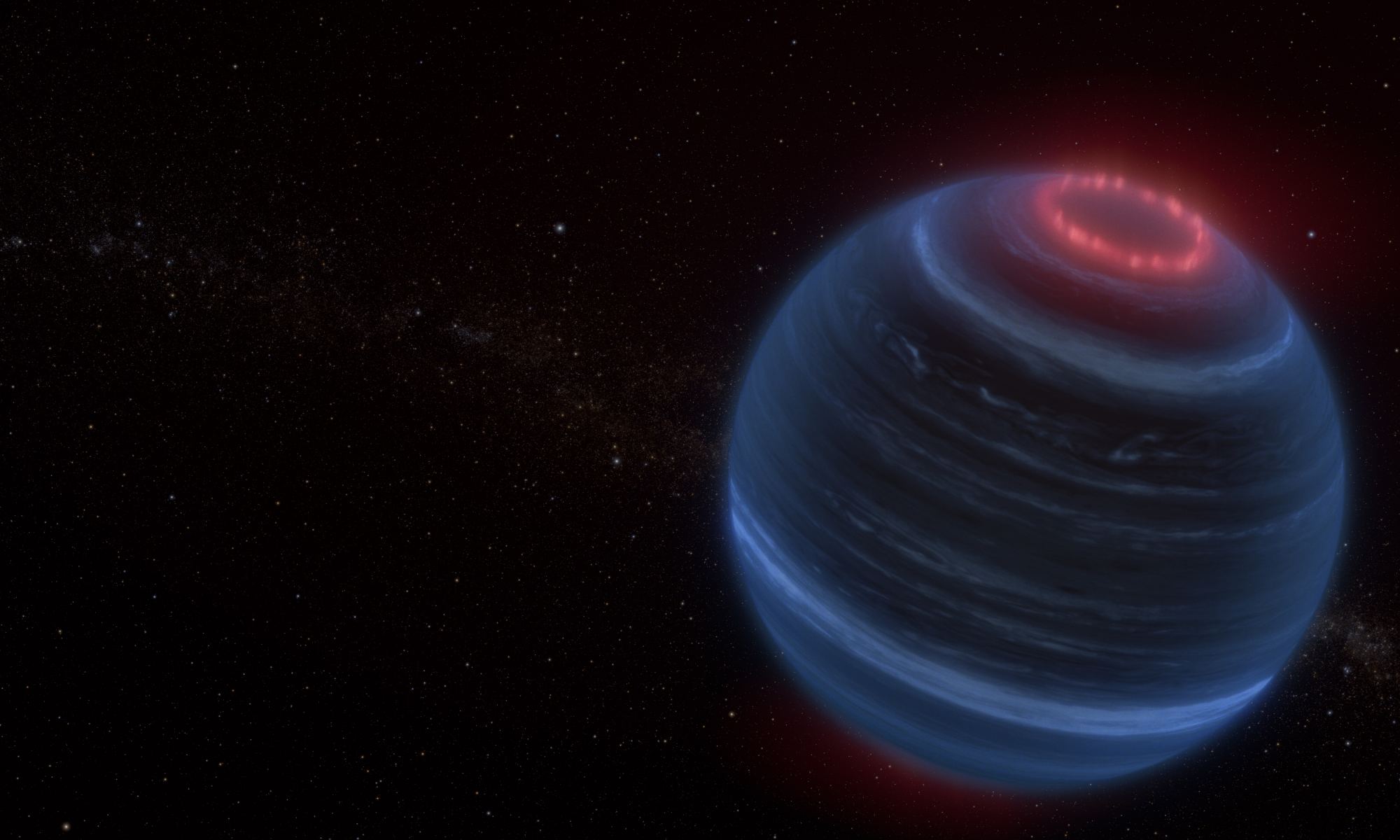What Makes Brown Dwarfs So Weird?
December 19, 2024 by Paul M. Sutter
Meet the brown dwarf: bigger than a planet, and smaller than a star. A category of its own, it’s one of the strangest objects in the universe.

Brown dwarfs typically are defined to have masses anywhere from 12 times the mass of Jupiter right up to the lower limit for a star. And despite their names, they are not actually brown. The largest and youngest ones are quite hot, giving off a steady glow of radiation. In fact, the largest brown dwarfs are almost indistinguishable from red dwarfs, the smallest of the stars. But the smallest, oldest, and coldest ones are so dim they can only be detected with our most sensitive infrared telescopes.
Unlike stars, brown dwarfs don’t generate their own energy through nuclear fusion, at least not for very long. Instead, they emit radiation from the leftover heat of their own formation. As that heat escapes, the brown dwarf continues to dim, sliding from fiery red to mottled magenta to invisible infrared. The greater the mass at its birth, the more heat it can trap and the longer it can mimic a proper star, but the ultimate end fate is the same for every single brown dwarf, regardless of its pedigree.
At first, it may seem like brown dwarfs are just extra-large planets, but they get to do something that planets don’t. While brown dwarfs can’t fuse hydrogen in their cores – that takes something like 80 Jupiter masses to accomplish – they can briefly partake in another kind of fusion reaction.
In the cooler heart of a brown dwarf, deuterium, which is a single proton and neutron, can convert into Helium-3, and in the process release energy. This process doesn’t last long; in only a few million years even the largest brown dwarfs use up all their available deuterium, and from there they will just cool off.
As for their size, they tend not to be much larger in diameter than a typical gas giant like Jupiter. That’s because unlike a star, there isn’t an additional source of energy, and thereby pressure, to prop themselves up. Instead, all that’s left is the exotic quantum force known as degeneracy pressure, which means that you can only squeeze so many particles into so small a volume. In this case, brown dwarfs are very close to the limit for degeneracy pressure to maintain their size given their mass.
This means that despite outweighing Jupiter, they won’t appear much larger. And unlike Jupiter, they are briefly capable of nuclear fusion. After that, however, they spend the rest of their lives wandering the galaxy, slowly chilling out.
The Discovery and Classification of Brown Dwarfs
Brown dwarfs were first theorized in 1963 by the astronomer Jacobus Kapteyn, and the first observational evidence was found in the 1990s. Since then, many have been found across the galaxy. These strangely fascinating celestial bodies exhibit characteristics that blend features of both stars and planets.
The classification of brown dwarfs is fundamentally based on mass and luminosity. Brown dwarfs are often categorized into three spectral types:
- L-dwarfs: Typically have temperatures between 1300-2000 K and are marked by their reddish color due to the presence of alkali metals.
- T-dwarfs: These celestial objects are cooler, with temperatures around 700-1300 K, and exhibit methane in their spectra.
- Y-dwarfs: The coolest of the cool, Y-dwarfs have temperatures below 700 K, and their spectra are dominated by ammonia.
The luminosity of brown dwarfs can vary widely based on their mass and age. With time, brown dwarfs will continue to cool and become increasingly difficult to detect as they fade into the darkness of space.
Where Are Brown Dwarfs Found?
Current detection methods for brown dwarfs include infrared spectroscopy and photometry, primarily because of their low luminosity. Brown dwarfs are usually found in star-forming regions, where the initial conditions of stellar birth are conducive to their formation.
One notable family of brown dwarfs is the Upper Scorpius association, which has a significant number of identified members. Studies have revealed that brown dwarfs can exist in groups, indicating they may form similarly to stars, despite their inability to sustain hydrogen nuclear fusion.
Examples of Notable Brown Dwarfs
| Name | Type | Location |
|---|---|---|
| 2MASS J01483523+2631596 | L-dwarf | Constellation Pisces |
| ULAS J133553.24+113100.3 | T-dwarf | Constellation Cancer |
| WISEP J004701.06+680352.1 | Y-dwarf | Constellation Aries |
Researchers continue to study these unusual celestial bodies in hopes of better understanding their formation, evolution, and role within their parent star systems. The combination of spectroscopic analysis and observational astronomy has proven highly effective in advancing this knowledge.
Interesting Facts About Brown Dwarfs
- Brown dwarfs are commonly referred to as "failed stars" because they do not have enough mass to sustain hydrogen fusion.
- Despite their name, brown dwarfs can vary in color from red to blue, depending on their temperature.
- The largest brown dwarfs can be mistaken for red dwarfs due to their similar luminosity and size.
- Brown dwarfs are thought to be the missing link between stars and planets and offer unique insights into the processes of star formation.
The Future of Brown Dwarf Research
The study of brown dwarfs has implications beyond understanding their existence patterns; they provide critical clues about star formation and the conditions of planetary systems. Future missions that include advanced infrared capabilities will likely continue uncovering novel brown dwarf populations and refining our understanding of their formation mechanisms.
As technologies improve and new telescopes are brought online, researchers are hopeful that they can remedy existing questions about the ages, formation history, and atmospheric composition of brown dwarfs, enhancing our understanding of the cosmos.
For more information about brown dwarfs, please refer to articles available on sources like Universe Today.




